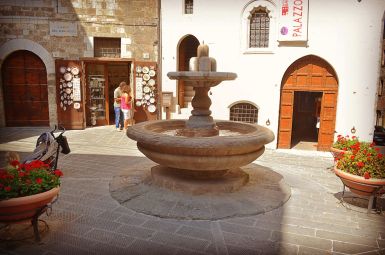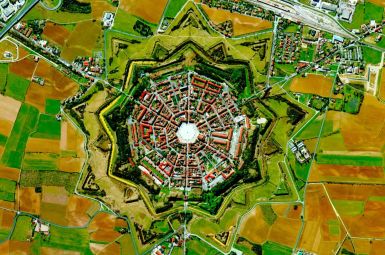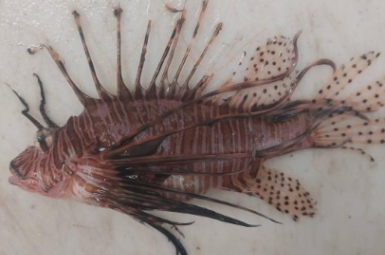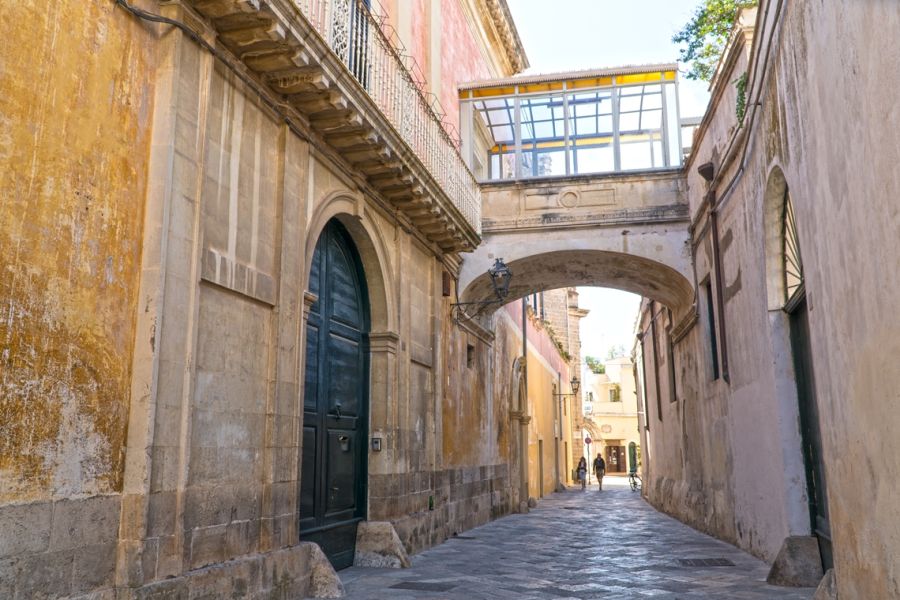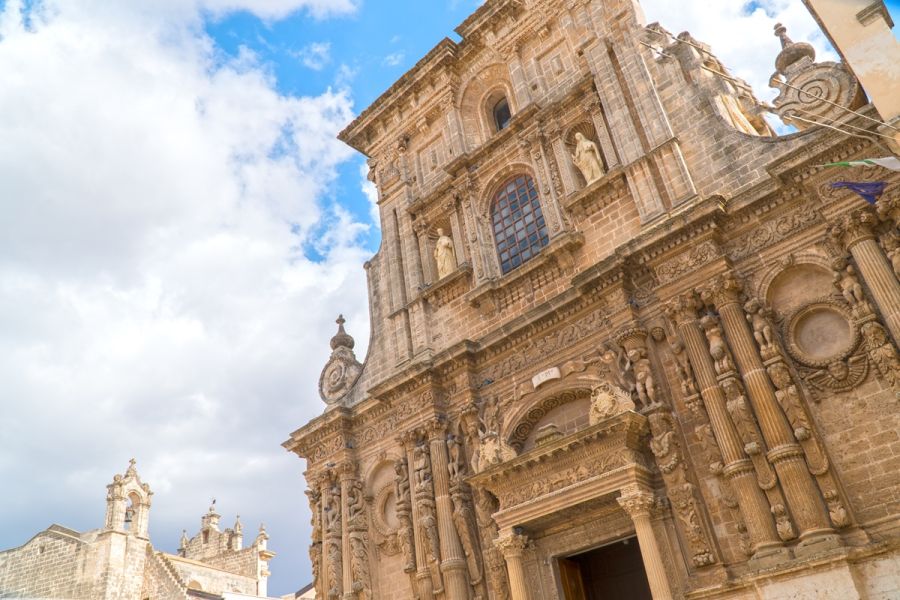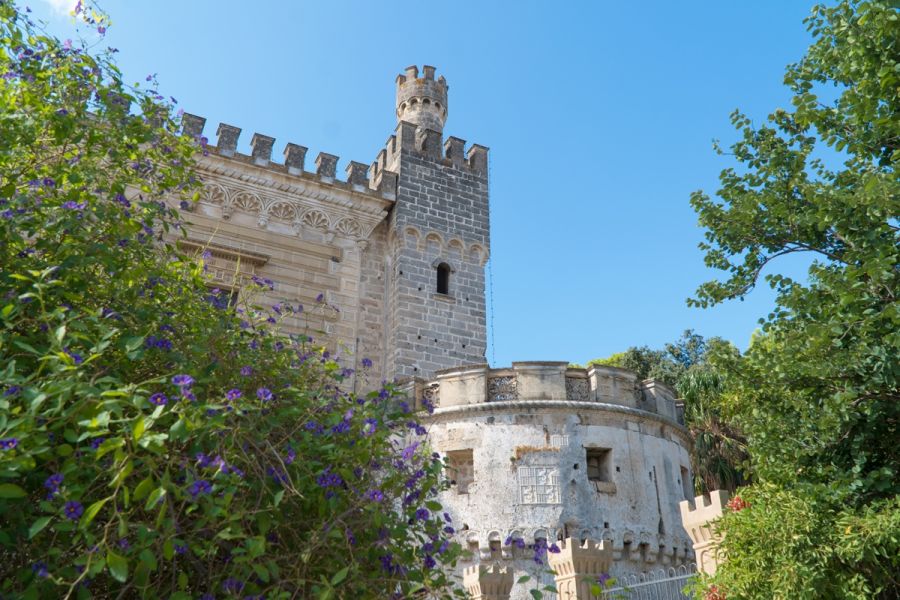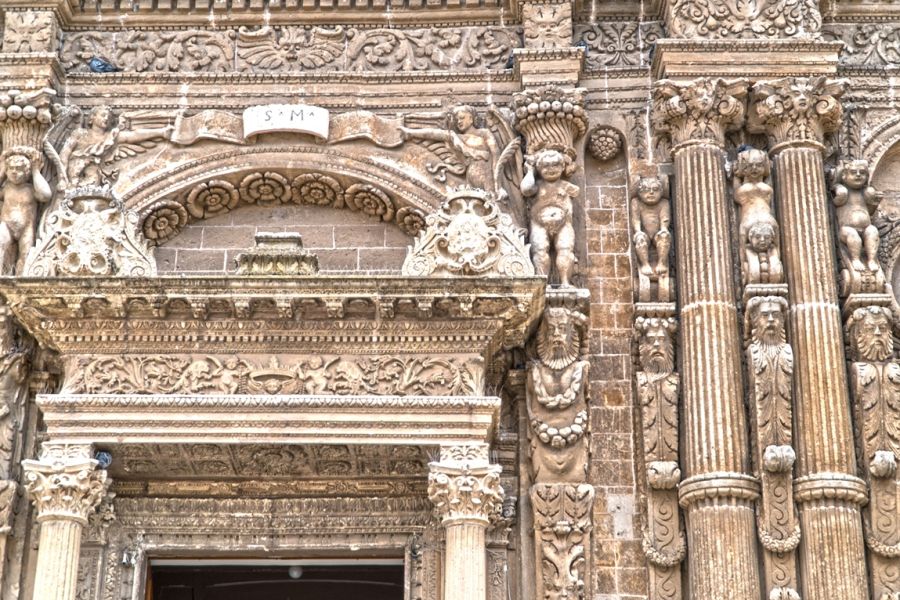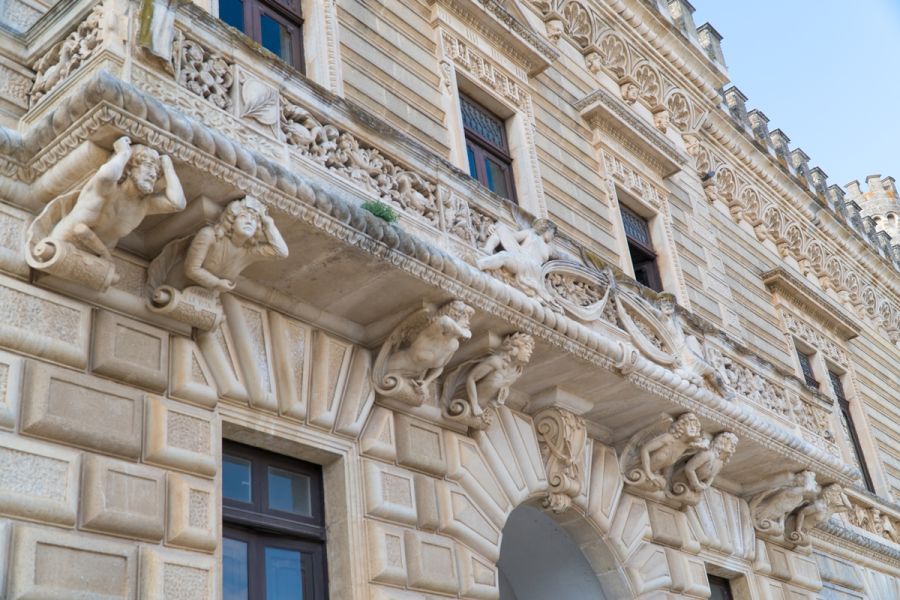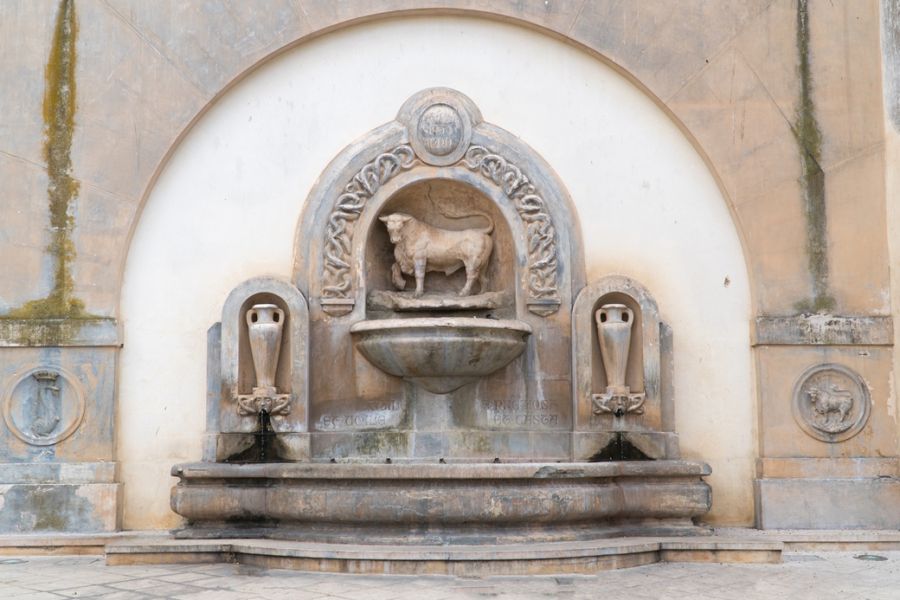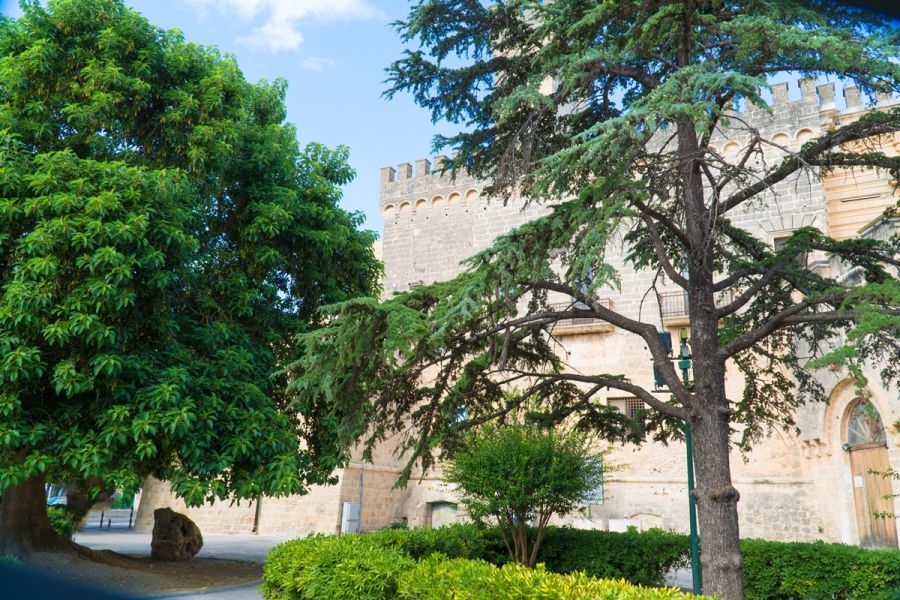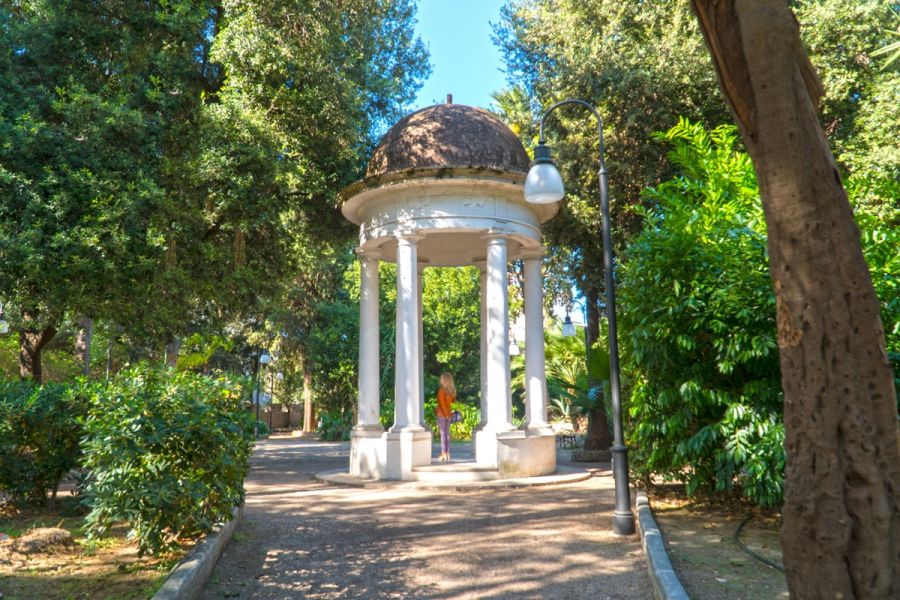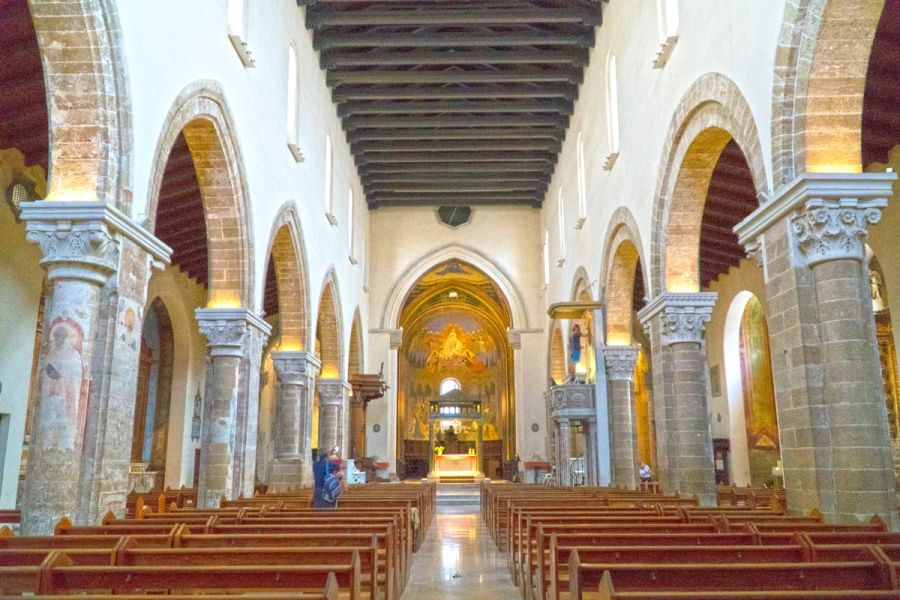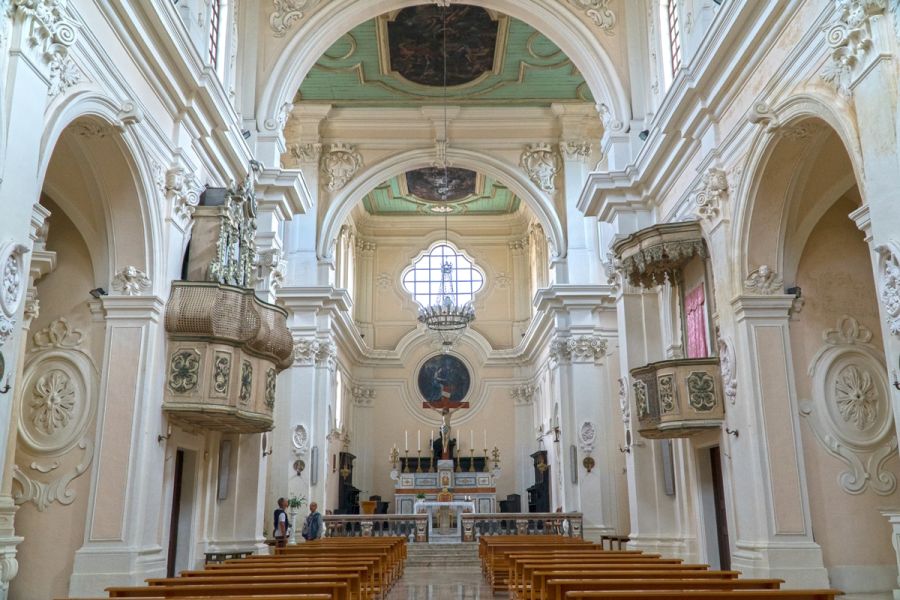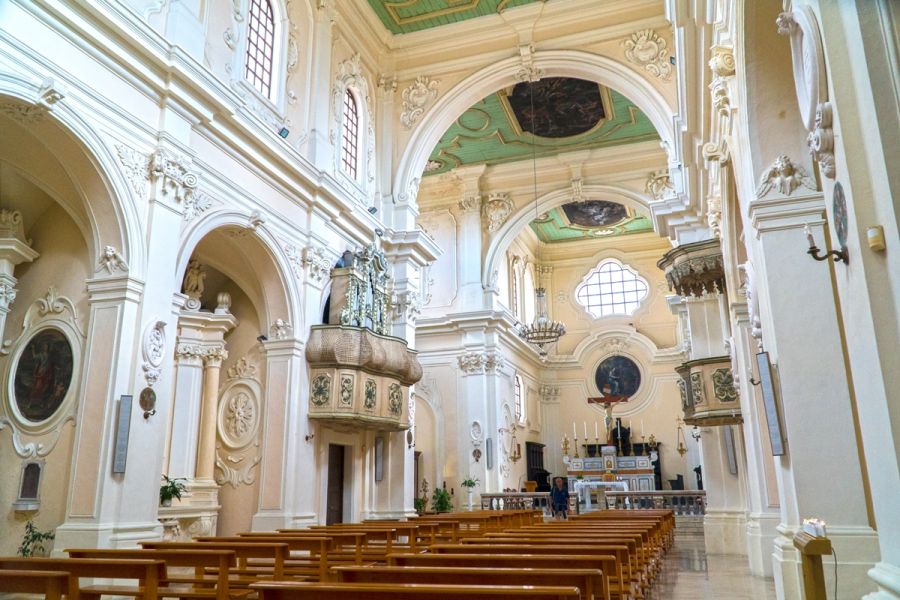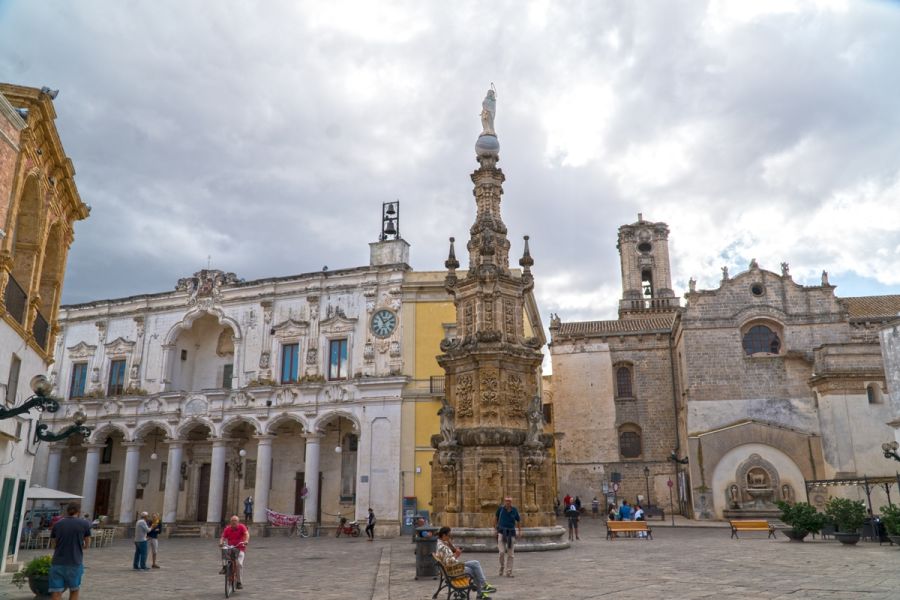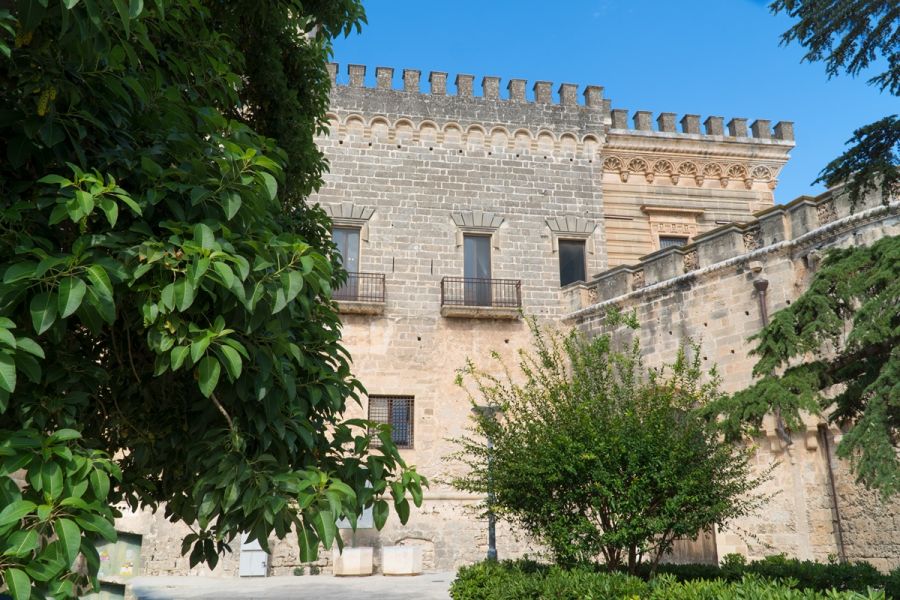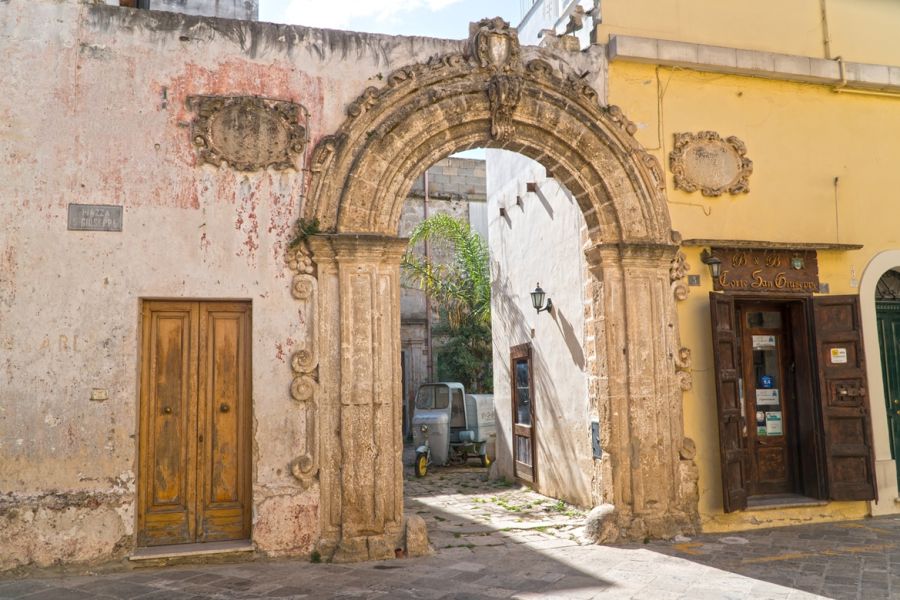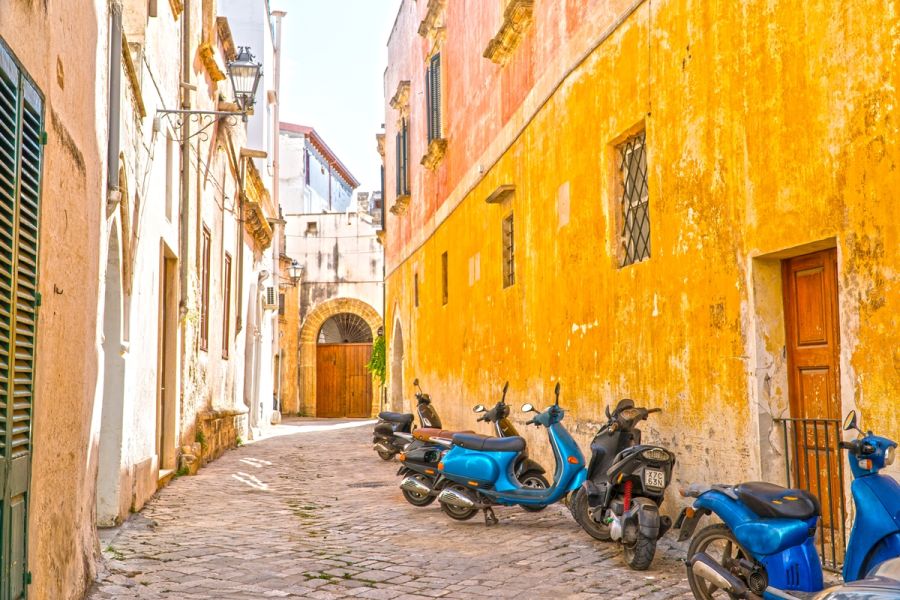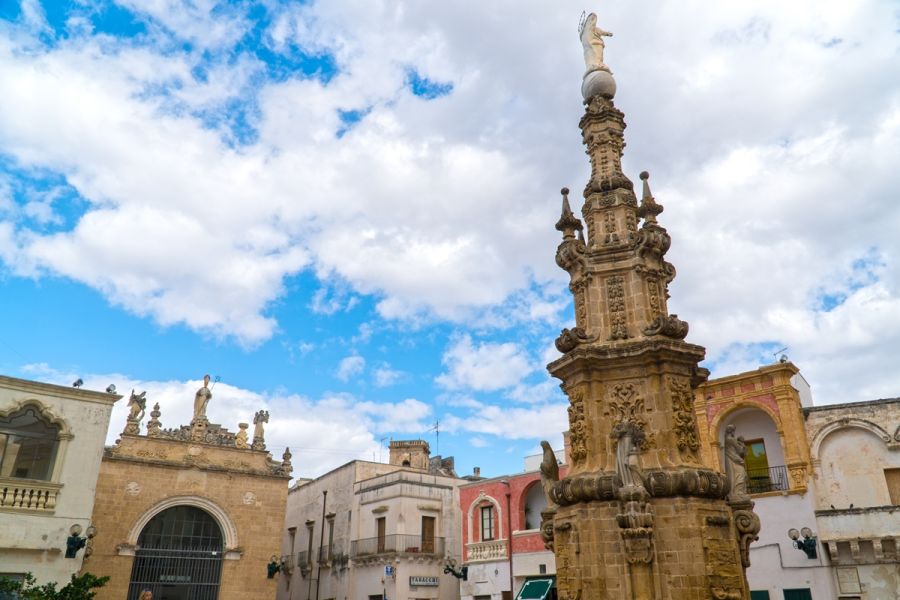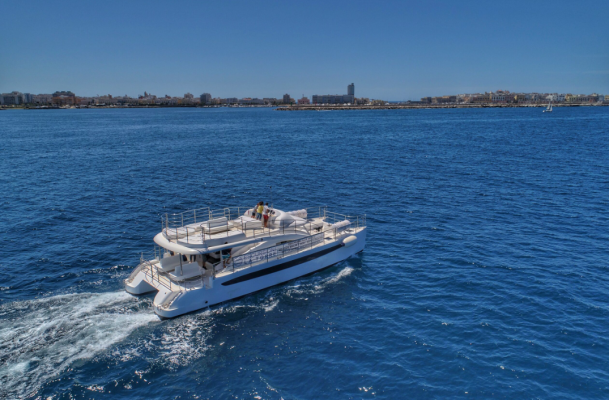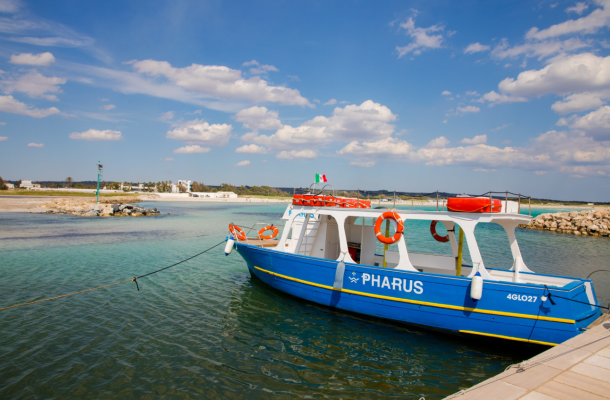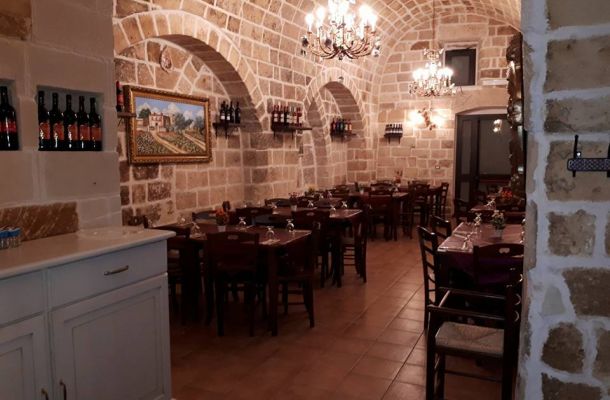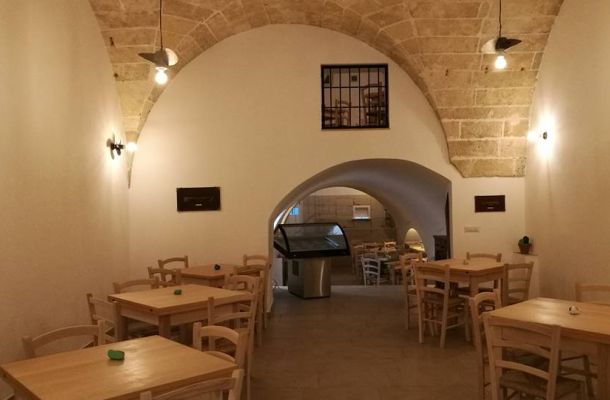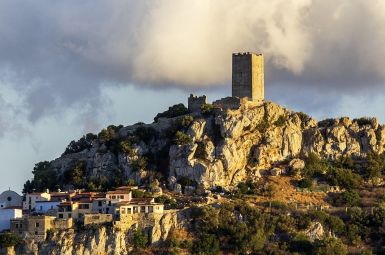
Il Borgo di Nardò
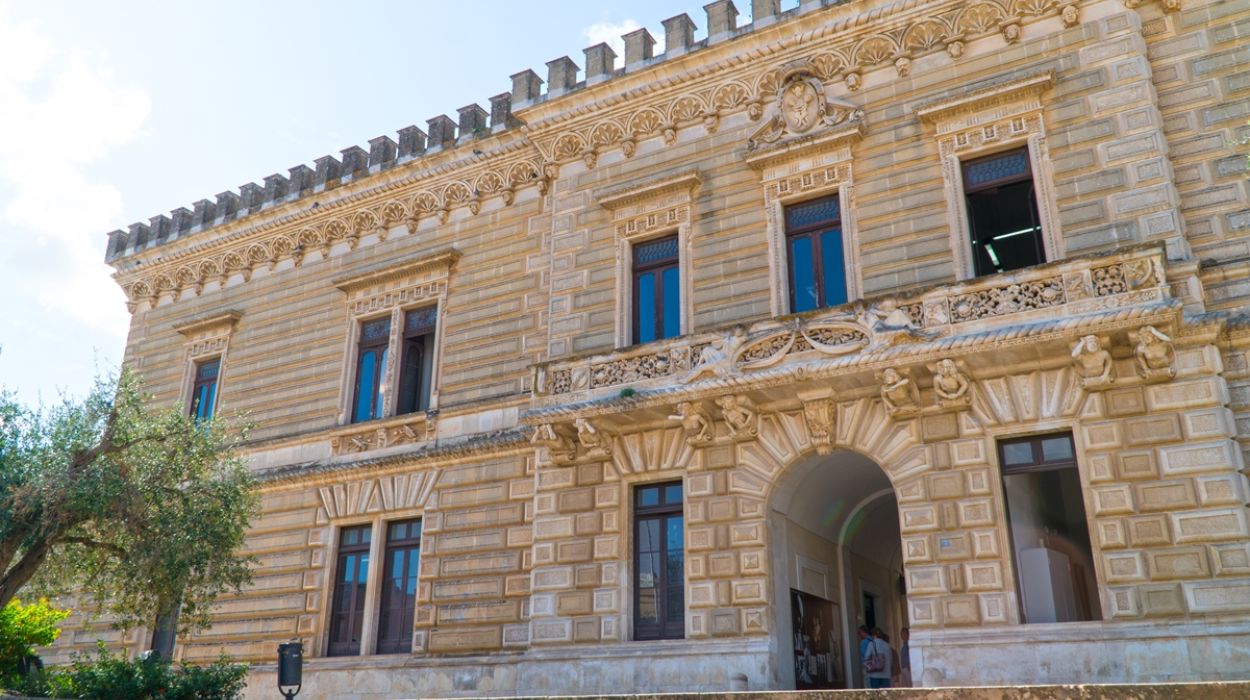
Il Borgo d’Italia
tutto da scoprire ed esplorare
Monumenti
La storia
Nardò nacque con l’arrivo dei Messapi, ma sono ancora tante le leggende che aleggiano sulla sua fondazione.
Nel III secolo rientrò nel territorio dell’impero romano e da allora la sua storia s’intreccia con quella dei popoli che nei secoli hanno abitato il meridione.
Quando il feudo di Nardò passa nelle mani della famiglia Acquaviva, diventa ducato. Belisario Acquaviva porta a Nardò la cultura e l’arte, grazie al suo animo da mecenate. Nardò è stato nei secoli rifugio e dimora di numerosi ordini monastici e ad essi si deve l’immenso patrimonio barocco, costruendo chiese e conventi che brillano come gemme tra le strade della città.
Quando il regno di Napoli passò in mano agli spagnoli, la pressione fiscale portò a ribellioni popolari e crudeli soppressioni.
Il potere feudale terminò la sua esistenza nel 1806, ma Nardò con le sue terre sterminate continuò ad essere succube di un potere autoritario: quello dei latifondisti. Due rivolte hanno attraversato la storia: la più recente è la rivolta dell’Arneo che si concluse con il varo della riforma Stralcio, la prima a pronunciarsi contro il latifondo.
Nardò è una terra di ribellione e di contadini, questo tratto è cucito nel tessuto sociale della città che ancora oggi conosce e resiste con onore alla piaga del caporalato.
Uluzzu
Uluzzu è un nome spigoloso, che sembra eco lontano di un dialetto arcaico. Questa parola dà il nome ad un periodo storico: il paleolitico Uluzziano; perché tra le insenature di questa baia, ispida come il nome che porta, ha abitato il primo Homo Sapiens d’Europa, lasciando resti e graffiti che risalgono ad un periodo databile tra gli ottantamila e i centomila anni prima di Cristo.
Castello Acquaviva
Il duca Giulio Antonio Acquaviva ebbe due meriti: guidò l’esercito aragonese nella liberazione di Otranto dai Turchi e progettò il castello di Nardò.
Le sue mura merlate sono il simbolo di un castello costruito per difendere il popolo. Quando nell’ottocento il castello è passato nelle mani della famiglia Personè è diventato un elegante dimora nobile. Sono stati introdotti elementi barocchi come le mura bugnate e le maschere scolpite nel cornicione, in cui si vedono volti umani, animali e strani demoni.
Il castello era dotato anche di un fossato, di cui oggi rimane una piccola parte accanto al giardino botanico.
Oggi questo palazzo è sede del municipio, nella sala consigliare sono appese tre tele importanti e sullo sfondo si può vedere la Nardò di un tempo, con le mura difensive, antiche chiese e campanili andati distrutti, oltre alla torre dell’orologio e ad un originale stemma civico.
Basilica Cattedrale di Santa Maria dell’Assunta
Nardò è un tripudio di Barocco. Si parte da Piazza Salandra per poi proseguire verso le chiese e i conventi del centro storico. Barocca è anche la facciata della Basilica Cattedrale che nasconde però origini molto più antiche, custodendo tra le sue mura i resti di un’antica abazia appartenente ai monaci Basiliani, il primo ordine monastico a giungere a Neretum.
La cattedrale che vediamo oggi è un intreccio di stili ed epoche, i diversi restauri e rimaneggiamenti sono stati dovuti alle intemperie ma anche ai numerosi terremoti che ne hanno intaccato la struttura. Quando arrivarono i Monaci Benedettini la cattedrale era stata erosa dagli agenti atmosferici ed è stata integrata e ricostruita con il Carparo, una pietra più resistente. Ai normanni si devono alcune modifiche e la ricostruzione del campanile.
La facciata appare estranea al resto della chiesa, perché è l’unico elemento barocco come barocca era anche la copertura, andata distrutta dopo una ristrutturazione ottocentesca.
La cattedrale di Nardò è custode gelosa di tele d’importanti nomi della pittura meridionale, ma soprattutto conserva un crocefisso nero in legno, molto venerato dai neretini perché la leggenda narra che i saraceni saccheggiarono la città e provarono a trafugare il crocefisso,per bruciarlo in piazza, ma mentre lo stavano trasportando recisero un dito della statua, da cui iniziò a sgorgare del sangue.
Tempietto dell’Osanna
L’Osanna è un monumento singolare, a cui ancora adesso non si è riusciti a dare un significato preciso. È un piccolo tempio di forma ottagonale, dall’aspetto orientaleggiante, al centro si trova una colonna centrale, posta in rialzo, che sorregge una guglia.
Si pensa che rappresenti il simbolo del potere Cristiano che imprigiona e blocca le altre religioni, infatti con molta probabilità il pilastro centrale è in realtà una stele pagana o un menhir.
.
Parco Naturale regionale di Porto Selvaggio e Palude del Capitano
Un sentiero impervio e tortuoso all’ombra di un boschetto di Pini d’Aleppo conduce ad una delle baie più belle di tutto il meridione. Il cammino a piedi si perdona facilmente davanti alla vista che ci sorprende senza preavviso: una baia incontaminata, circondata dal verde e da dolci scogliere e bagnata da rigeneranti acque sorgive. Siamo nel centro del Parco Naturale di Porto Selvaggio, che è stato istituito nel 1980 e successivamente ampliato nel 2006, arrivando a comprendere anche la Palude del Capitano.
Negli oltre mille ettari del parco gli elementi naturali s’intrecciano con gli elementi antropici dando vita ad un ecosistema fatto di macchia mediterranea e pini piantati negli anni cinquanta, grotte artificiali sommerse e grotte naturali che raccontano millenni di storia. Sì, perché il Parco di Porto Selvaggio ha in sé luoghi importanti come la grotta Uluzzu e la grotta del Cavallo, dimora dell’uomo Uluzziano.
Poco più avanti, nella Serra Cicora, si trovano tracce di un’antica necropoli neolitica che non ha eguali e che è ancora oggi ricca di misteri ed interessanti particolarità, come per esempio i resti di uomini sepolti sotto alcuni menhir.
La Palude del Capitano è l’isola deserta che tutti vorremmo, un luogo d’incanto tra acque dolci che sgorgano dalle rocce e acque salate che vengono fuori dal sottosuolo. Un posto in cui viene premuto stop sul tempo e in cui il mondo viene lasciato fuori, deve aver pensato questo il capitano che si è rifugiato in questa palude e ha costruito una casetta per poter vivere in tranquillità, passando il tempo a guardare il piccolo laghetto e ad ammirare gli animali marini e le piante rare che crescono intorno.
Se siete avventurieri ma anche se non lo siete, se amate la sabbia e gli scogli, se siete curiosi e amanti del trecking ma anche se vi piace abbronzarvi stando stesi pigramente al sole, il Parco Naturale di Porto Selvaggio è ciò che fa al caso vostro.
Ville delle Cenate
Le Cenate sono una terra di mezzo, tra il centro storico di Nardò e il blu limpido delle acque di Santa Caterina. Lungo la strada che unisce questi due punti si trova un vero e proprio tripudio di architettura barocca e liberty, intervallata da spunti moreschi e negotoci, firmati dei più famosi architetti del periodo: sono le ville di Cenate. Le ville costruite tra il Millesettecento e il Millenovecento sono incorniciate da una strada bianca, punteggiate da verdi fichi e profumate dall’odore pungente della macchia mediterranea. Rispecchiano in pieno il gusto della borghesia di quel tempo, che amava arricchire i propri giardini da piante esotiche e statue di gusto neoclassico.
Via Taverna è la strada che unisce Santa Maria di Leuca e Taranto, il suo nome deriva dalla villa che si trova su questa strada, che è anche la più antica dell’intero complesso architettonico. Questa dimora è stata costruita su un’antica struttura del ‘Quattrocento che in passato era adibita ad ostello e punto di riposo per cavalli, come testimoniano i pali rimasti ancora ben visibili nel giardino. Nel 1780 è stata edificata la villa, dai tratti sobri, ingentilita semplicemente da un portale e da balconi che rievocano il gusto barocco, in una cornice di mura di cinta. Un’altra dimora storica molto bella è la Cinata del Monsignore, edificata come residenza estiva del vescovo e voluta dal Vescovo Petruccelli nel 1755. I lavori di costruzione sono terminati nel 1838, con l’allora vescovo Lettieri, per questo la villa è dominata da due gusti architettonici che si possono ben distinguere: il barocco e il neoclassico.
Tutte le ville Cenate sono dotate di un fascino senza tempo, ma nessuna raggiunge la bellezza e la magnificenza di Villa Maria Cristina Personè, costruita tra il 1920 e il 1930. È un delicato intreccio di barocco ed elementi moreschi. Archi orientali s’intarsiano in un contesto di forme sinuose, fregi, decori e scalinate monumentali. Il motto otium cum dignitate ci fa calare in uno scenario di eleganti colazioni sul patio e feste estive, illuminate candele ed abiti scintillanti. Questa villa sul finire della seconda guerra mondiale è stata attraversate dalle scarpe chiodate dei soldati tedeschi, di cui si può ancora vedere la traccia sul pavimento. Villa Muci invece, poco più avanti, è diventata ospedale negli anni del conflitto mondiale e nel dopoguerra ha ospitato un gruppo di ebrei, reduci dai lager nazisti. Questa villa che brilla del valore immenso che solo le ferite storiche sanno dare, giace da anni abbandonata all’incuria.
Lungo questa strada di passaggio si trova uno degli angoli più belli del Salento che rimane custodito nei cuori dei pochi che lo conoscono. Se ancora non conoscete le Cenate o se ci passate per caso mentre andate al mare, il consiglio che possiamo darvi è solo uno: fermatevi e ammirate. Non potrete mai pentirvene.
Curiosità
Nardò, luogo di Memoria
Affaticati, scavati nell’animo, così dovevano essere gli ebrei che riuscirono a sopravvivere ai campi di concentramento. Alcuni di loro tra il 1944 e il 1945, trovarono ospitalità a Nardò e nella vicina Santa Maria al Bagno e il comune costruì un vero e proprio quartiere ebraico, con un kibuz e una sinagoga. Tra case abbandonate e polverose, si possono ammirare ancora oggi i murales realizzati da Zivi Miller in quegli anni, grazie ai quali è nato il Museo della Memoria e dell’Accoglienza che raccoglie le testimonianze di quel periodo: murales, graffiti e materiale donato dall’Associazione Pro Murales Ebraici.
Come riconoscimento del grande altruismo del popolo neretino, la Città di Nardò nel 2005 è stata insignita della medaglia al Valore Civile dal Presidente della Repubblica Ciampi.
Il centro test di Nardò: Il circuito dei record
Racchiuso in una segretezza massima, circondato da diecimila alberi e protetto da un protocollo d’intesa che viene stipulato dagli addetti ai lavori e dai pochi fortunati che riescono a entrare, a cui viene vietata ogni genere di foto. Forse è per questo che in pochi conoscono il “Nardò Technical Center Proving Ground”, il centro test di Nardò ideato per provare auto ad alta velocità.
È stato costruito ai tempi d’oro della Fiat, nel 1975, ma dal 2012 è di proprietà della Porsche. È un gigantesco anello con un diametro di quattro km, che si estende su un’area di circa settecento ettari. Al suo interno si trovano venti piste di prova, con rettilinei, tornanti, salite e discese per poter garantire un’efficace prova della vettura. Questo, unito ai continui aggiornamenti e alla possibilità di riprodurre qualsiasi condizione atmosferica in ogni giorno dell’anno permettono all’ “anello di Nardò” di rimanere ancora oggi nella classifica dei più importanti circuiti prova mondiali. Del resto quei pochi numeri trapelati in poco più di quarant’anni parlano chiaro: stiamo parlando del regno della velocità estrema, di un circuito che detiene ancora oggi record di prestazioni impossibili da raggiungere altrove. Solo per fare alcuni esempi: nel 1979 la Mercedes- Benz riuscì ad andare oltre i quattrocento km orari e, arrivando a tempi più vicini a noi, nel 2002 la Wolkswagen ha battuto il record di velocità in ventiquattro ore, sulla distanza, con 7740, 576 chilometri con una velocità media di 322, 891 km/h.
Numeri da capogiro a pochi passi dai piccoli borghi del Salento: incuriosiscono, stupiscono, ma di sicuro non sono adatti ai deboli di cuore.
Personaggi
Daniele Greco
Daniele Greco è nato a Nardò, il primo marzo 1989. È una promessa dell’atletica leggera, specializzato nel salto triplo.
Nel 2009, a soli vent’anni, è diventato campione agli Europei under 23 di Kaunas e nel 2013 ha riconfermato la sua posizione agli Europei Indoor di Goteborg e ai Giochi del Mediterraneo di Mersin.
